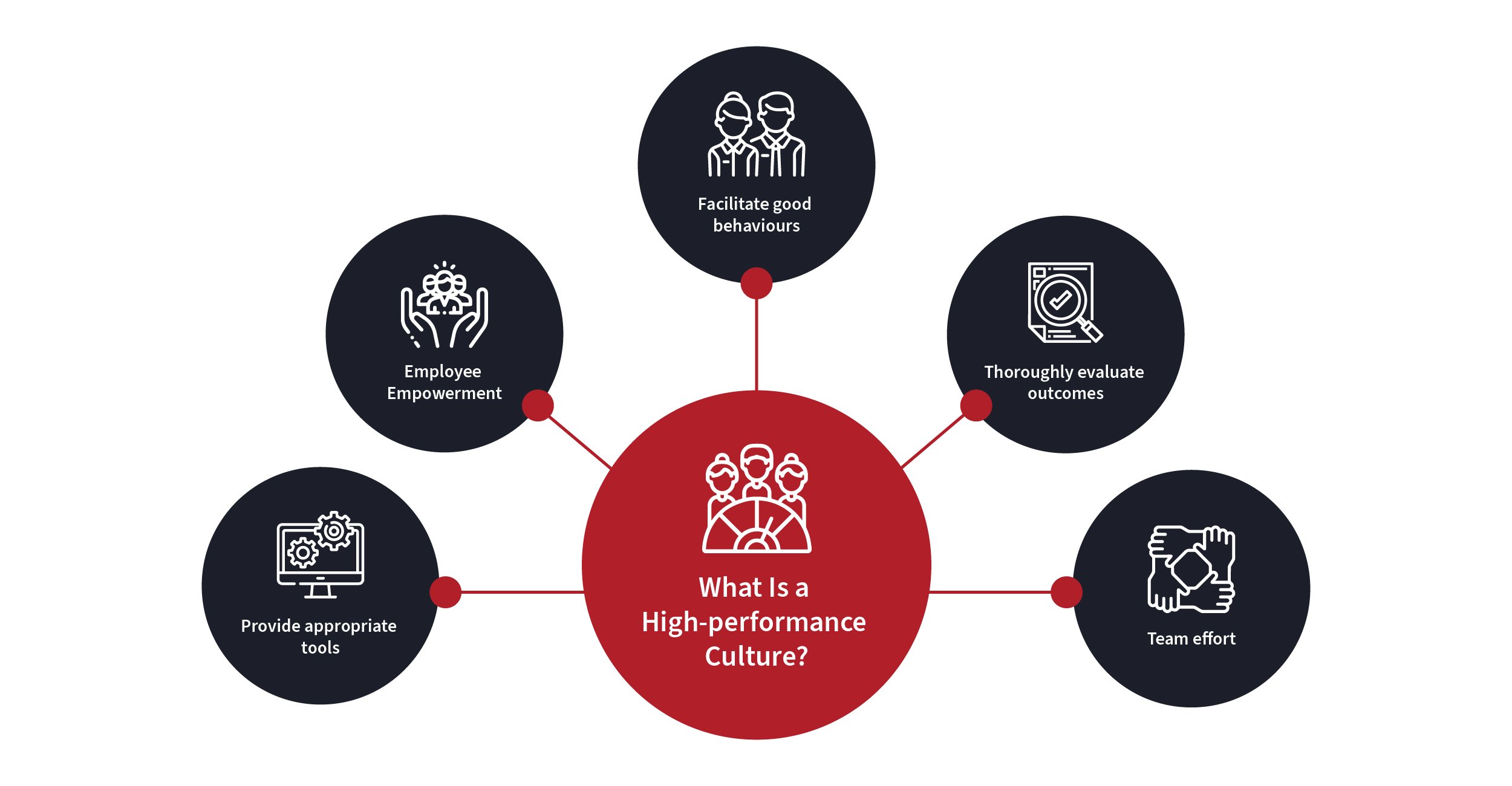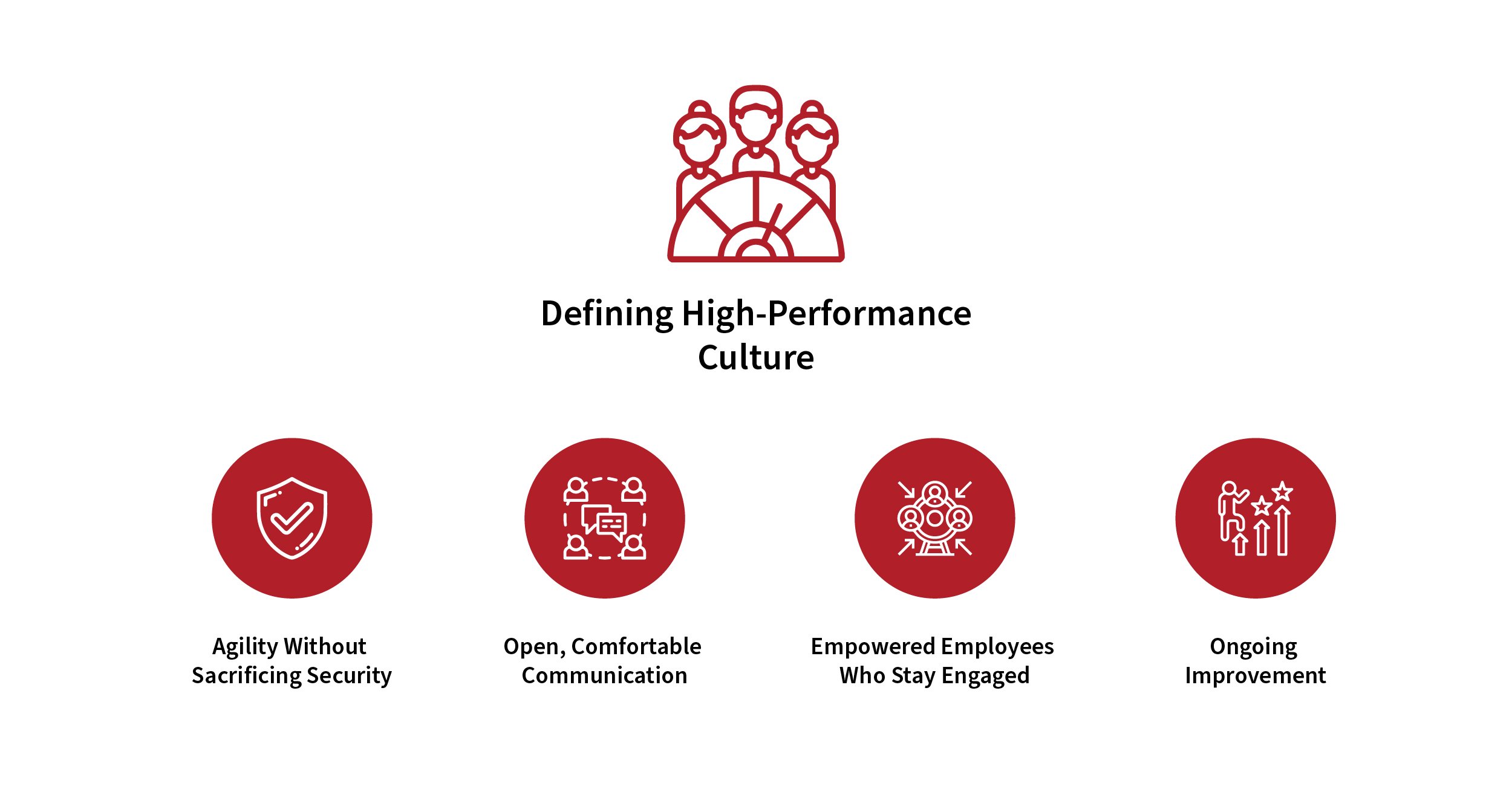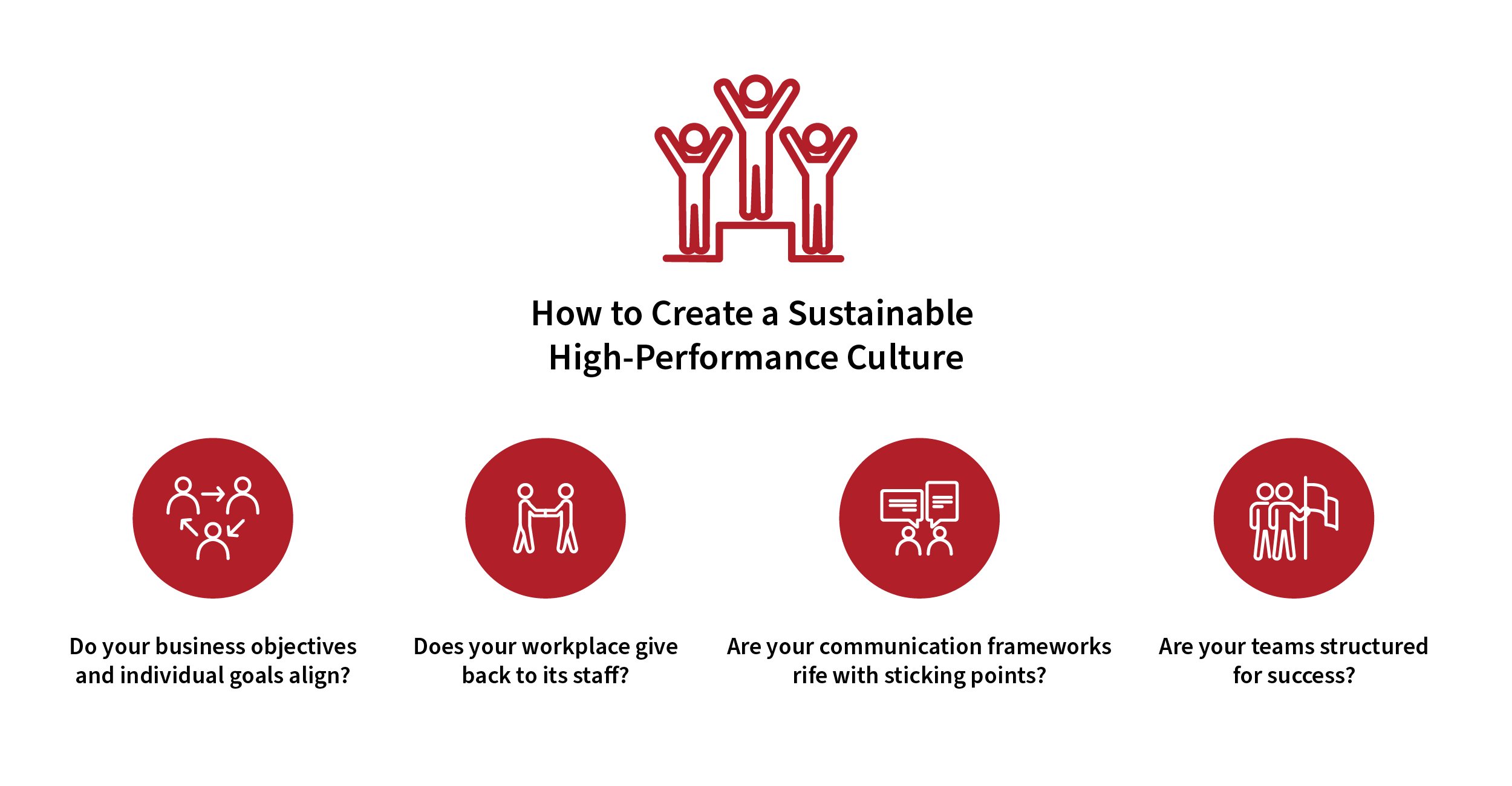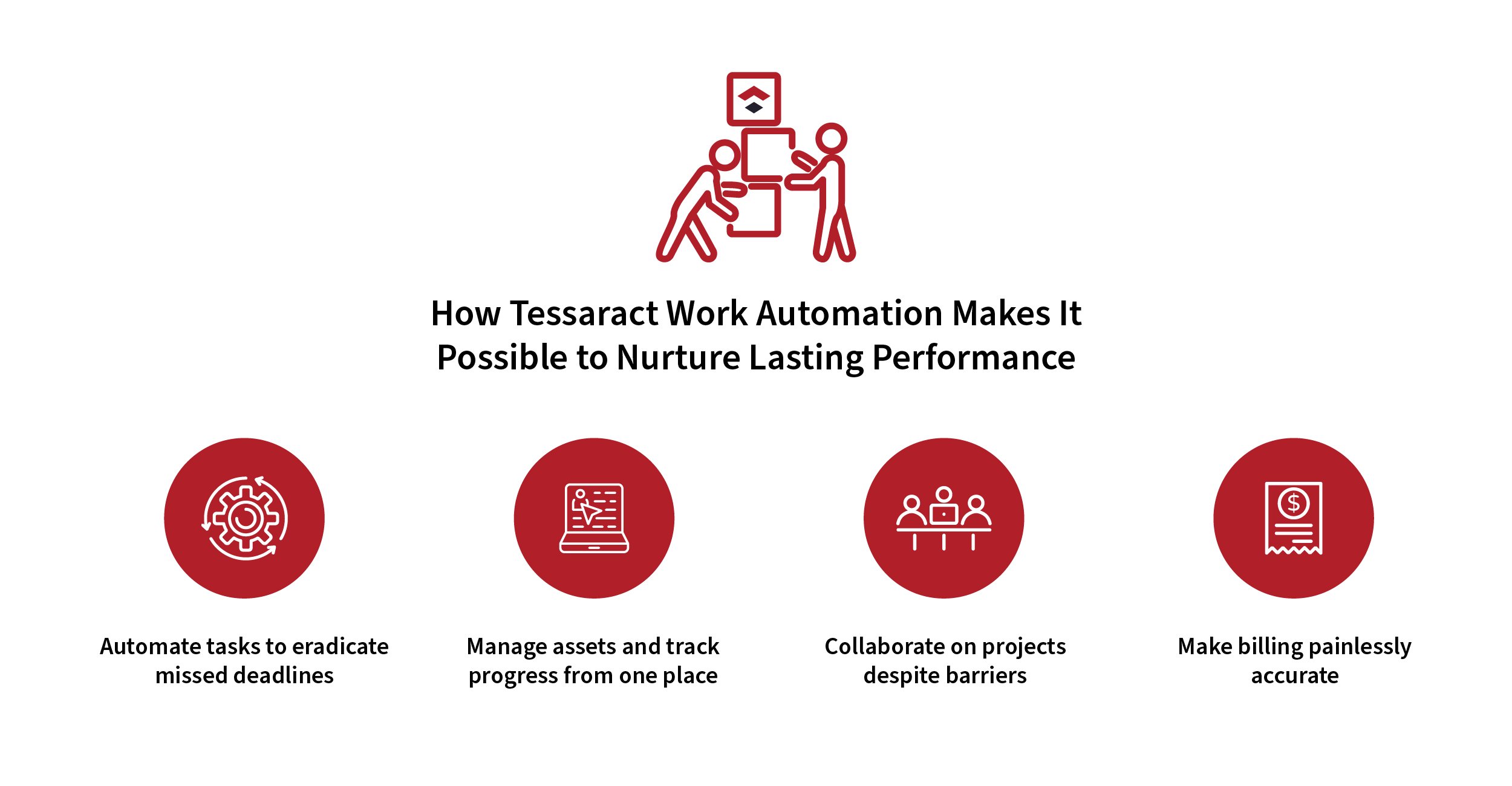You know your firm has the potential to excel, and you understand that it isn't just a matter of being particularly adept at a few critical tasks here and there. You're in the market for lasting organisational achievement, and this means you need to cultivate a high-performance corporate culture as a whole. While there are plenty of ways to go about this, adopting work automation practices could help you sustain the high productivity that keeps business profitable – and exciting.
Why is automation so essential to performance, and how does it manifest in the wild? Here's how to spot the hallmarks of sustained achievement and use technology to make it happen.
What Is a High-performance Culture?

Most people have a vague concept of what high performance entails. You might even have a concrete definition, complete with explicit specifications and performance indicators.
There's no hidden universal meaning here; it's really about what matters to your organisation. As a starting point, it's generally safe to assume that however your enterprise ordinarily judges progress, a high-performance culture achieves those standards on a consistent, transparent basis.
This definition is necessarily broad: For instance, if you were part of a strictly top-down organisation, then it might incorporate the unique leadership practices that facilitated high team member morale and drove your staff to take personal ownership of outcomes. Suppose you worked for a distributed or remote-first business. In that case, your understanding of a high-performance culture might be more likely to focus on the links between the moving parts, such as the communication channels you've built or your willingness to mentor new hires during onboarding.
No matter what kind of structure your workforce assumes, cultivating a high-performance culture demands balance. It's equally essential to foster team member empowerment to encourage and facilitate good behaviours, provide appropriate tools, and thoroughly evaluate outcomes. The burden of establishing a productive culture doesn't rest on managers or employees alone – It's a team effort that demands insights, participation, and feedback from everyone.
Defining High-Performance Culture
 While corporate cultures differ widely, specific characteristics are common to many of the most successful:
While corporate cultures differ widely, specific characteristics are common to many of the most successful:
1. Agility Without Sacrificing Security

It would help if you didn't have to expose your business to unacceptable risks to pivot in response to new developments. You should further ensure your team members don't feel like they're taking on undue hazards merely by voicing their opinions or making minor operating decisions.
Individual and organisational agility are both vital to high performance. It's up to leaders to grease the gears; however, you need to set the tone so that your staff members understand what's appropriate.
Please make sure you let your employees know that you support and value their efforts at innovation. Mistakes happen, and providing a welcoming safe for experimentation helps you limit the fallout as you get a better feel for your workers' ability to operate independently.
When your employees feel less threatened by the prospect of change, they'll be more willing to pursue opportunities that might turn out to be profitable proactively. They'll gain a positive outlook that can increase satisfaction, promote overall agility, and lead to better experiences for customers and partners. What's more, they'll know they can come to you when things go wrong, reducing your chances of a disaster catching you unawares.
2. Open, Comfortable Communication

Being able to communicate openly gives you more power to achieve complex tasks – which is vital to performing at an optimal level even in the face of challenges. Unfortunately, many organisations overlook this critical element of operational oversight.
It should be evident that establishing healthy communication channels facilitates the flow of information. A more subtle benefit is that doing so enforces uniformity of intent.
Consider a company that wanted to undertake a big project: If the task was too large for any one, the firm might split it into items that teams could easily accomplish. Each team would necessarily have its objectives and constraints. Still, a good communication framework could ensure that everyone had the same overarching goal in mind as they tackled their work.
Effective communication practices make it convenient for people to discuss solutions to problems. They also offer safe zones to ask questions, raise potential red flags, and engage in constructive criticism. From disseminating directives to acknowledging positive outcomes, establishing a norm streamlines everyday communication tasks to help you select a friendlier, more rewarding workplace, leading to the following characteristics.
3. Empowered Employees Who Stay Engaged

When a business process goes sideways, do your staff feel like they can initiate resolutions independently? If they think of possible improvements, can they depend on you to be receptive to hearing their ideas?
Employees who feel empowered to make decisions are more likely to put their brains to work productively when it counts. Studies have shown that sharing power, resources, and knowledge with employees improves job satisfaction and encourages commitment: Workers are more willing to volunteer or dive into tasks when they believe their input matters.
Motivation engenders performance; after all, people have to feel sufficiently driven to take on tough jobs and push through setbacks. While it's not always possible to keep employees intensively engaged in every single task, promoting a culture that focuses on empowerment might raise morale across the board. Ask yourself whether
- Your communication tools make it easy for your workers to share their accomplishments and for you to highlight good work,
- You respond to requests for clarification in a supportive manner by providing easy access to supporting documentation and other sources of knowledge, and
- You demonstrate that you recognise the value of your workers' time by giving them the tools they need to optimise their workflows and minimise low-skilled tasks.
4. Ongoing Improvement

Arguably, the most significant hallmark of a high-performance culture is that it doesn't stop learning. Companies that succeed work to sustain their results, minimising general workplace stressors or hunting down wasted overhead to achieve a more stable bottom line.
Consistent self-assessment is key to continuous improvement. Even if you don't gain clear insights right away, patterns will begin to emerge the longer you keep up with your past successes and failures. These observations are essential to avoiding past mistakes and identifying potential opportunities.
How to Create a Sustainable High-Performance Culture

There's more than one way to boost organisational output in the short term. When refining an enterprise's culture with longer-winded objectives, however, you should start by considering the fundamentals:

- Do your business objectives and individual goals align? What is your organisation trying to accomplish, and are your teams on the same page? Get used to exploring this question regularly and experimenting with new changes – This is an ongoing self-improvement technique.
- Does your workplace give back to its staff? Valuing your employees is an unmistakable hallmark of effective management. By recognising those who achieve and publicly showing your appreciation, you'll motivate people to improve their performance.
- Are your communication frameworks rife with sticking points? Bottlenecks are natural when dealing with novel communication tools or shifting team dynamics, but such jams should be the exception to the rule, not the norm. Explore whether your feedback systems facilitate on-demand interaction – and whether your responses and corporate culture encourage honesty.
- Are your teams structured for success? Building a good team goes far beyond finding talented individuals. You need to ensure they get together by providing a hierarchy that promotes collaboration yet operates invisibly in the background. Does the way you organise your teams and delegate responsibility foster this kind of effortless interfacing, or are you falling behind when it comes to matching personalities, talents, and individuals to critical tasks? If your communication systems seem to miss the mark no matter what you do, then taking a closer look at your team composition might be the correct answer.
Fostering Organic Structure

Many maintain that form should take a back seat to function in visual design. You can apply the same innovative thought to assemble more impactful organisational structures and ultimately nurture performance. Imagine you've been tasked with a new project and leadership of the teams who'll do the legwork – in this situation, you're the only newcomer, while everyone else is more or less familiar with their peers. Assigning managerial roles without a clear understanding of the existing team dynamics could be a program for disaster.
It's best to let structures develop organically and naturally. In other words, the hierarchies and systems you set up to facilitate communication and teamwork need to make intuitive sense to your workers and not get in their way. Gallup's research found that employees' perceptions of work structure can impact whether they remain engaged, making it critical to stay up to date on what workers think of your organisational efforts – and your ability to furnish them with vital resources.
Leveraging Workflow Automation

Workflow automation entails using software to organise and automate potentially complex business processes. How does this help cultivate performance culture? One study by McKinsey found correlations between an organisation's ability to stay agile and whether or not it achieved positive outcomes, such as cost-efficacy improvements and customer responsiveness. Automation makes agility commonplace without disrupting your preferred management style.
Workflow automation tools give you the freedom to sketch workflows in a flowchart-like manner. You can supplement these layouts with special nodes that represent the automation of various tasks.
Suppose a typical workflow involves periodically logging data from an IoT system to a compliance database, generating follow-up emails for website shoppers who left items in their carts and seeking approval signatures for client intake documents and new contracts. Automation's big advantage lies in its power to abstract such jobs away from the tedious routines they typically entail – why should you have to jumpstart your IoT logging system manually, decide who to email, or hunt down signatures yourself? With automation, the software can apply your custom event flags to intelligently decide when each action is important and execute tasks sans intervention. Automating your workflows can contribute to a happier, healthier culture that prioritises achievement.
How Tessaract Work Automation Makes It Possible to Nurture Lasting Performance
Tessaract is a comprehensive business management solution that brings workflow automation to life for businesses of all sizes. This capable, cloud-based software suite lets you:

- Automate tasks to eradicate missed deadlines: Tessaract intelligently guides you through the custom steps you specify for different tasks – and helps your entire team keep up as you move forward. It's simple to generate appropriate checklists for each job type and use these plans to assess your performance or scaffold new projects. You can even set up knowledge-sharing rules for handing off items to others at any point in the workflow.
- Manage assets and track progress from one place: Tessaract's powerful project management module keeps all aspects of your business organised so that you can concentrate on getting work done smoothly and efficiently. Make smarter data-driven decisions. Why shouldn't you enjoy a bird's-eye view of the details that matter most? No matter where you are in the world, Tessaract keeps you in the loop by automatically syncing emails to cases and projects so that everyone can work securely together, even if they're physically separated.
- Collaborate on projects despite barriers: Don't try to take it all on yourself. Distribute the workload by assigning tasks and receive instant notifications whenever a task has been assigned to you or requires review. Tessaract makes sharing automatic and identifies key stakeholders who ought to be involved.
- Make billing painlessly accurate: With Tessaract, you can automate billing for each customer, and this doesn't just mean invoices. Whether you want to send payment reminders, adjust bills to match changing job conditions, or keep your vendors happy, Tessaract's automated time-tracking, seamless data warehousing, and transaction reconciliation ensure that what you charge reflects the value of the work you do.
Does automation keep your workforce humming? Making the move could decide whether your quest for high performance is a lasting change or a mere flash in the pan. Cut out the busywork, and achieve optimal efficiency by demoing Tessaract today.
